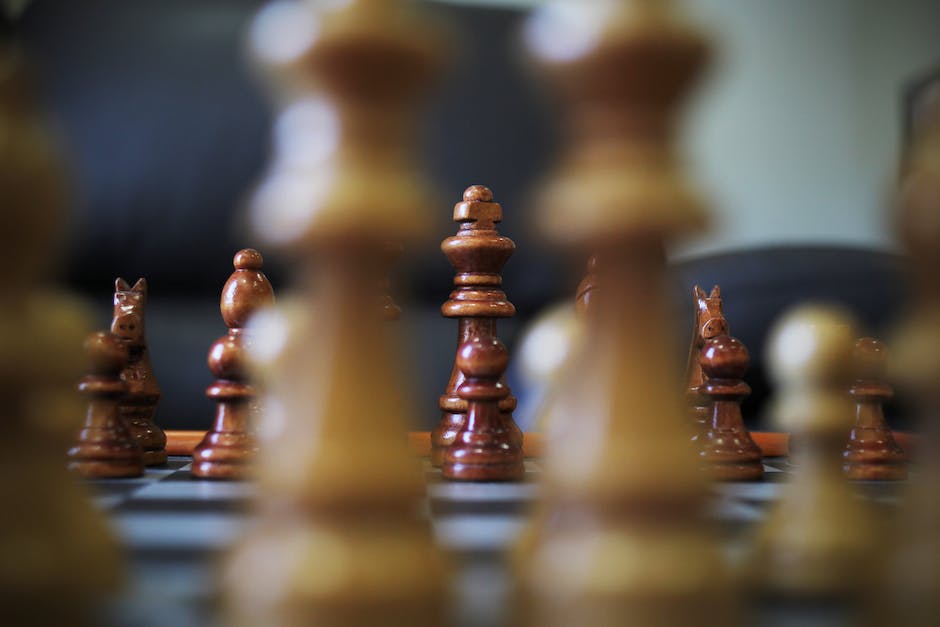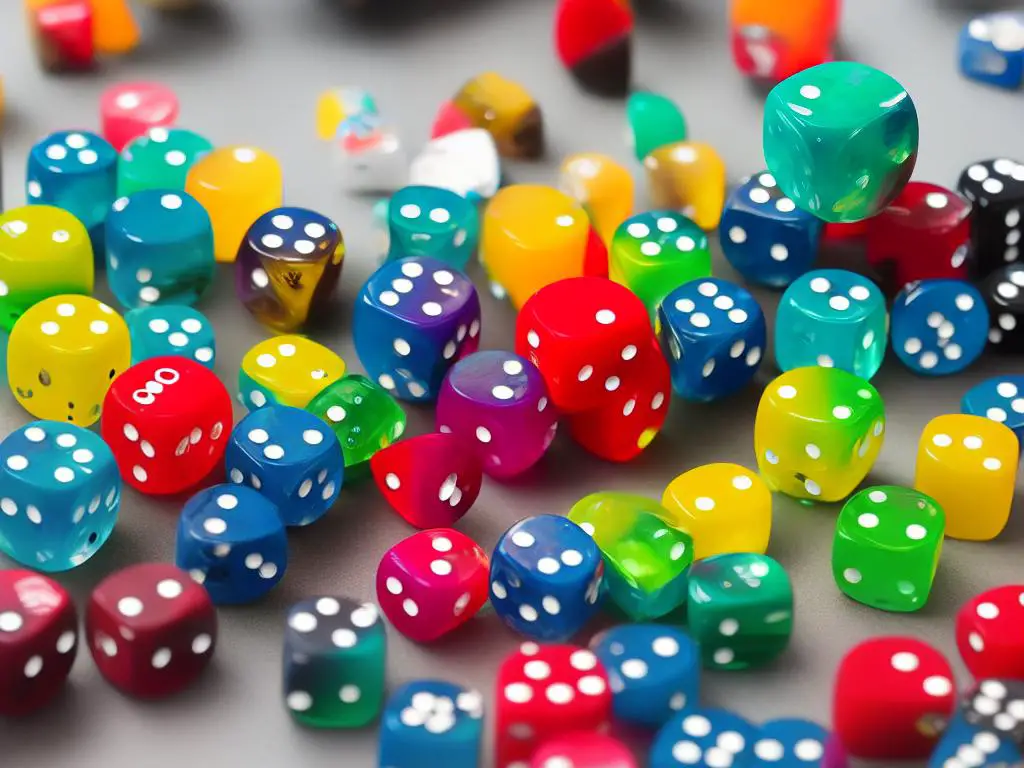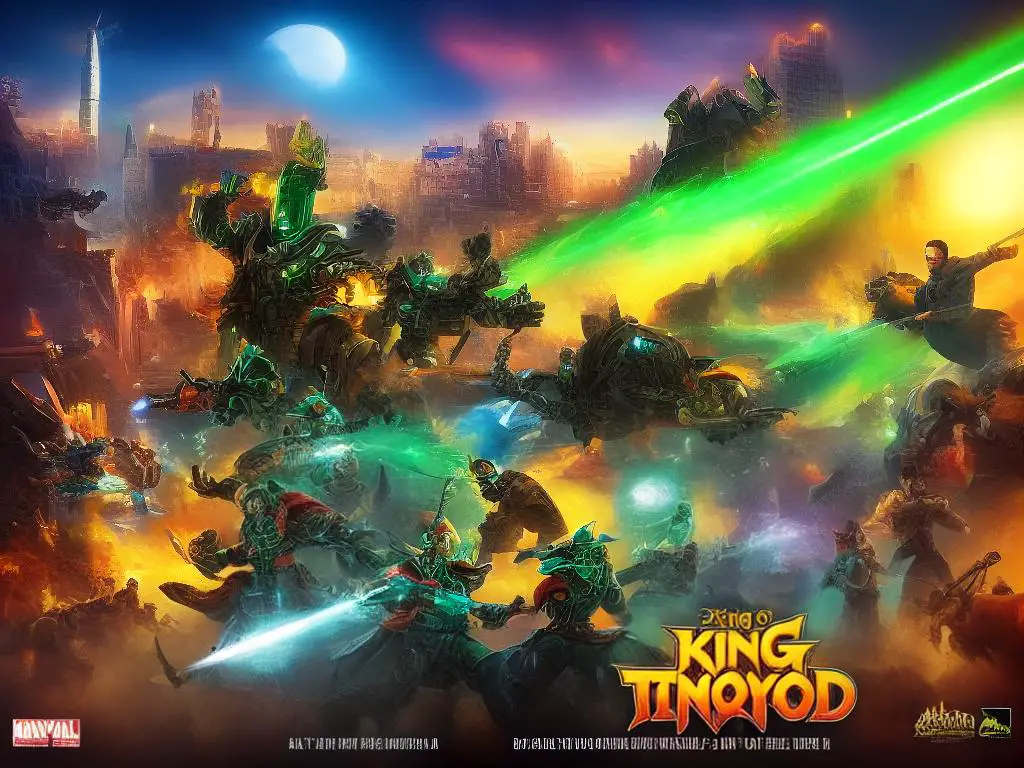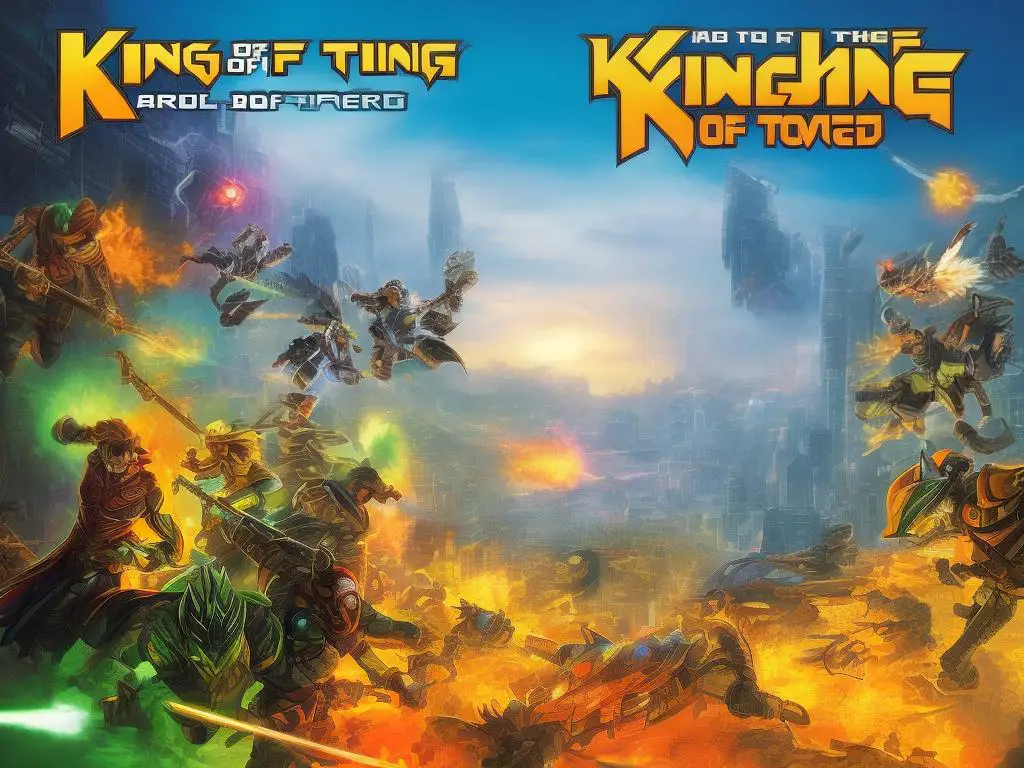Stepping into the thrilling world of King of Tokyo, a board game that melds strategy, wit, and a touch of luck, might seem intimidating at first. However, once you grasp the fundamentals of the dice, cards, monsters, and energy cubes, you’ll find yourself engrossed in the epic battles of giant monsters vying for control over Tokyo. This game offers a vibrant mix of strategic planning, tactical decision making, and the sheer unpredictability of dice rolls. The aim of this piece is to provide a comprehensive guide to understanding the basics, mechanics, strategies and tactics, along with a deep dive into the rules and regulations of King of Tokyo, setting you well on your way to becoming the next King!
Understanding the Basics
Understanding the Basics of King of Tokyo
King of Tokyo is a strategic board game that combines elements of dice rolling, card drawing, and competitive monster battling. Here’s how to understand the basics and start playing.
Game Objective
The objective of King of Tokyo is simple. Each player starts with a monster, and the goal is to either be the first to gain 20 victory points or be the last monster standing after all others have lost their health points.
Components of the Game
Dice
The dice are integral to King of Tokyo. You throw six dice which have symbols for attack, healing, energy, and victory points. You have three rolls per turn, similar to a game of Yahtzee, to try and get the results you want.
Monsters
Each player chooses a monster at the beginning of the game. The monster’s health and victory points are tracked on a dial that corresponds with the monster.
Cards
Three types of cards are involved in King of Tokyo – Power cards, Keep cards, and Costume cards.
Power cards represent various abilities that your monster can gain. These abilities range from simple power-ups like extra attacks or health, to game-altering abilities like changing dice results or stealing other players’ cards. These cards can be purchased using energy cubes.
Keep cards are similar to power cards but they have ongoing effects that last as long as you have the card.
Costume cards, added in the “King of Tokyo: Power Up!” expansion, provide your monster with one-time or continuous bonuses.
Energy Cubes
Energy cubes are the currency in King of Tokyo. You earn these cubes by rolling energy symbols on the dice, and you can spend them to buy cards, which provide various benefits and abilities. Remember, the judicious use of energy cubes and the right cards can drastically swing the game in your favor.
Playing the Game
To start playing, first determine the first player by rolling the dice. The player with the most attack symbols goes first.
On their turn, each player rolls six dice up to three times, choosing which dice to keep and which to re-roll each time. The symbols on the dice obtained at the end of their rolls determine what happens.
For instance, landing three-of-a-kind of numbers 1, 2, or 3 gets you that many victory points. Roll an attack symbol and you attack other monsters. The heart symbol heals you, but it can’t be used if you’re in Tokyo, while the lightning symbol gives you an energy cube.
After your turn, the next player on your left goes and the game continues clockwise.
Always remember, strategizing your moves and using cards, cubes, and dice effectively is key to winning King of Tokyo. Happy gaming!

The Game Mechanics
Setting up “King of Tokyo”
Start by laying the game board in the center of the play area. Shuffle the deck of power cards and deal three faceup next to the board. Each player selects a monster and takes the matching monster board. Place the energy points (green cubes) in a pile next to the board. Set the life points of each monster board to 10 (tracked with a red heart) and victory points to 0 (tracked with a black star).
Turn Mechanics
Each player’s turn consists of rolling six dice to score points, attack other players, heal wounds, or collect energy. You can choose to reroll any or all of the dice up to two times, similar to the game Yahtzee.
Understanding the Dice Actions
- Attacking: The claw symbol represents attack. If you roll this, your monster attacks other monsters. In Tokyo, you’ll attack all monsters outside of Tokyo. Outside of Tokyo, you’ll attack monsters inside of Tokyo.
- Healing: The heart symbol represents healing. For each heart you roll, your monster regains one life point. Monsters inside Tokyo, however, cannot heal.
- Energy: The lightning bolt symbol represents energy. Each lightning bolt equates to one energy point, which is recorded using the green cubes.
- Destruction (scoring points): These are the numbers on the dice ranging from 1-3. Rolling three of the same number scores that number of points. Rolling more than three of the same number scores an additional point for each matching number beyond the third.
Entering and Leaving Tokyo
The first monster to roll an attack symbol on their turn enters Tokyo. While inside Tokyo, a monster can attack all other monsters outside of Tokyo but cannot heal. If a monster inside Tokyo is attacked, they may choose to leave Tokyo, and the attacking monster must enter.
For first entering Tokyo, a monster gets 1 victory point. Starting their turn in Tokyo gives them another 2 victory points. But longer they stay, the higher the risk of being attacked.
Scoring Victory Points
The game ends when a monster reaches 20 victory points or all other monsters have been knocked out (reached 0 life points). Gain victory points by rolling matching numbers, staying inside Tokyo, or buying certain power cards using energy. Balance between staying alive and scoring points is the key to win “King of Tokyo”.

Strategies and Tactics
Understanding the Basics of King of Tokyo
King of Tokyo is a strategy board game for 2 to 6 players with monsters, dice, and critical decisions to be made. Every player is a gigantic monster and aim to become the King of Tokyo by accumulating 20 victory points or be the last monster standing by eliminating other monsters.
Choosing Your Strategy
King of Tokyo’s strategies and tactics can involve being aggressive (fighting), being strategic (collecting victory points), or balanced (a combination of both). Below are some strategies that you can practice depending on your preferred method of play:
- The Aggressor: This strategy aims to eliminate other players as quickly as possible. Every time you roll the dice, you prioritize getting attack results. You need to play aggressively from the start, constantly attacking other players’ monsters to reduce their health points.
- Point Hoarder: This strategy plays the long game by focusing on acquiring victory points. You aim to roll triples of numbers 1 to 3 to get the corresponding victory points. It’s less concerned with directly engaging with the other monsters unless necessary.
- Balanced Player: This strategy balances attacking and accumulating victory points. You decide each round whether to attack, gain points, or even heal based on the dice results and other players’ situations.
Tactics for Winning
- Energy Accumulation and Card Purchase: Energy cubes are essential. They allow you to buy power cards, which can provide additional powers, bonus points, or special actions. Hence, a practical tactic is to save up energy and be strategic about purchasing power cards.
- Healing your Monster: Your monster’s health is crucial. If it drops to zero, you’re out of the game. Hence, one tactic is to heal often, especially if you’re playing an aggressive game.
- Maximizing your Position Choice: When you attack while in Tokyo, you hit all the monsters outside. Knowing when to leave or stay in the game can dictate your survival, especially when your health starts to decrease.
Adapting Strategies with Player Count
The number of players in the game significantly influences your strategy. In games with fewer players, an aggressive strategy can work better as each attack has a bigger impact. As the number of players increases, a victory point strategy may be more effective. You’ll need to strike a balance between avoiding damage, accumulating points, and using your energy effectively.
Monitoring Game Situation
Much of King of Tokyo involves adapting your tactics to the evolving game situation. Keep an eye on other players’ health points, their victory points, and their power cards. By maintaining this situational awareness and adapting your strategy, you can increase your chances of becoming the King of Tokyo!

Rules and Regulations
Understanding the Game: A unique blend of strategy and chance.
King of Tokyo is a light strategy game from designer Richard Garfield where players represent giant monsters in a battle royale in Tokyo. The game uses a simple mechanic of rolling dice and choosing which results to keep and which reroll, similar to the classic game of Yahtzee.
Game Components: What’s in the Box?
Inside the box, you will find the game board, which represents the city of Tokyo; 6 Monster boards and matching Monster figures representing different creatures; 6 six-sided dice; and Energy cubes. There are also card decks which include Power Cards that provide special abilities to the monsters.
Objective: The Battle for Supremacy in Tokyo
The goal of the game is to either be the first monster to accumulate 20 victory points or to be the last monster standing by dropping all rival monsters’ health to zero.
Setting Up: Preparing for the Monster Face off
Each player takes one Monster board and corresponding figure. Set your Monster board’s Health counter to 10 and Victory point counter to 0. Place your monster figure outside of Tokyo. Shuffle the Power Cards and draw three cards to create the active card line-up.
Playing the Game: Unleashing the Monster Within
On your turn, you roll six dice. The dice faces have different symbols – claws, lightning bolts, hearts, and numbers 1, 2, 3. After the initial roll, you can choose to reroll any or all dice up to two more times.
- Claws damage other monsters. If you’re inside Tokyo, you damage all monsters outside Tokyo, if you’re outside, then you damage the monster inside Tokyo.
- Lightning Bolts earn you Energy cubes which can be used to purchase Power Cards.
- Hearts restore health but can’t be used if you’re the monster in Tokyo.
- Rolling triples of numbers 1, 2, or 3 gives you that number of Victory points.
Moving into Tokyo: The Fight for Dominance
If Tokyo is vacant at the start of your turn, and you roll one or more Claws, you must move into Tokyo. Being in Tokyo earns you victory points each turn and lets you attack all monsters outside Tokyo, but all monsters outside Tokyo attack you, and you can’t heal.
Using Power Cards: Unleashing Special Powers
You can spend Energy cubes gained from dice rolls to buy Power cards which provide your monster with unique abilities that can give you an advantage in the game.
End of the Game: The Last Monster Standing
The game ends when a monster reaches 20 Victory points, or only one monster remains alive. In either case, that monster is declared the King of Tokyo!
Remember, the key to winning is a balance of aggression, heal, and accumulation of Victory points. Enjoy the mayhem!

Mastering King of Tokyo requires more than just understanding how to play; it involves developing strategic foresight, adapting to the game’s ever-changing dynamics, and making purposeful decisions that strike the right balance between aggression and conservation. Comprehending the game’s mechanics, combined with the implementation of your very own tactics and the strict adherence to rules and regulations, enhances not just your chances of victory but also the overall gaming experience. May you find wonder, excitement, and challenge in every dice roll, every monster’s roar, and every fierce battle for Tokyo’s throne. Here’s to many hours of monstrous entertainment and thrilling victories!